
Sculpture of French soldier praying, underground in Picardy, France (January 22, 2014) (© Jeff Gusky)
Over a century after World War I broke out in Europe, the earth still bears its mutilations. Trenches are scarred in the ground, unexploded munitions litter the overgrowthof the Western Front. Further below the surface in northeastern France are lesser-known physical reminders of the Great War, where in tunnels and quarries soldiers on both sides carved sculptures and wrote their names on the chalk and limestone walls.
“There are a lot of remnants of the war; they’re horrifying and awe-inspiring and very sober,”Jeff Gusky, a photographer who has explored the subterranean art of World War I, told Hyperallergic. “But there’s something delicate, intimate, and emotional when you’re underground in complete darkness and your headlamp shines on the wall of an underground city, and there is an inscription that may not have been seen by anyone in over a hundred years. It’s like they’re speaking to you.”
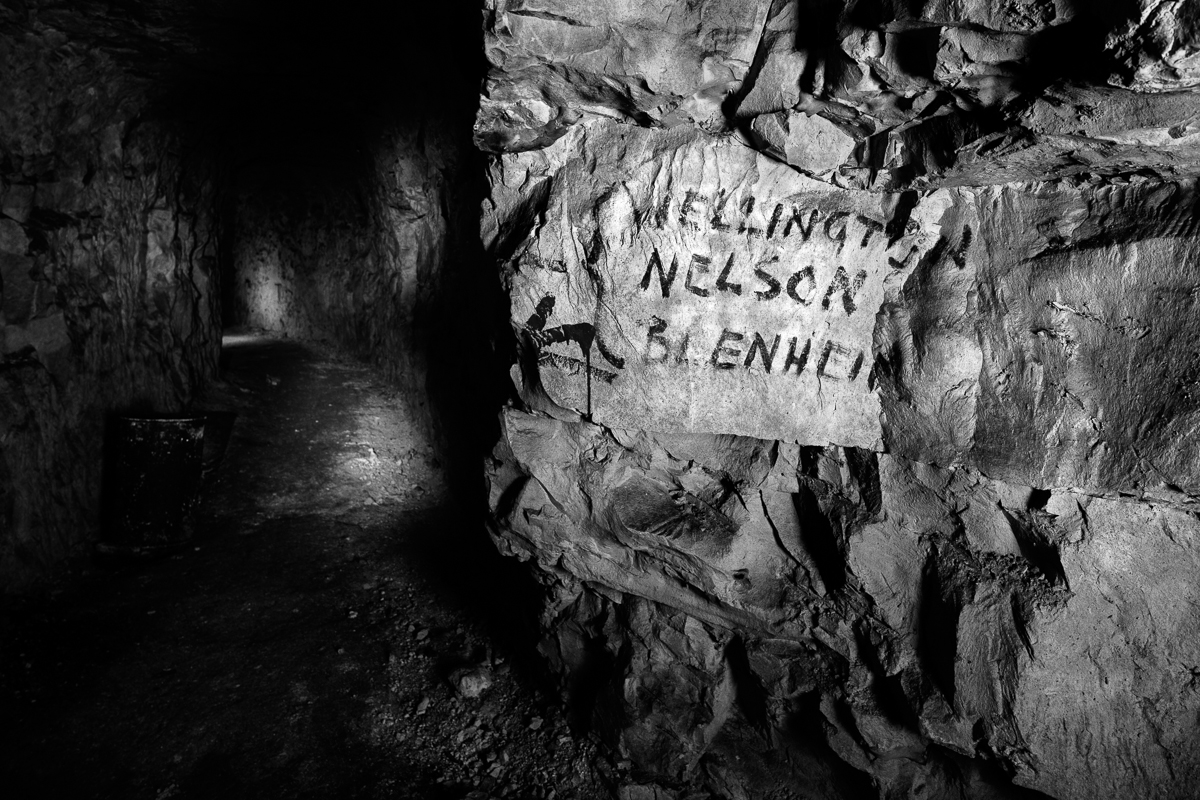
StreetSIGN IN underground WWI city, Nord-Pas-de-Calais, France (January 26, 2014) (© Jeff Gusky)
underground WWI city, Nord-Pas-de-Calais, France (January 26, 2014) (© Jeff Gusky)
 underground WWI city, Nord-Pas-de-Calais, France (January 26, 2014) (© Jeff Gusky)
underground WWI city, Nord-Pas-de-Calais, France (January 26, 2014) (© Jeff Gusky)
While Gusky says that he’s “likely seen more than anyone alive” of these forgotten underground spaces as part of his ongoing The Hidden World of WWI project, he’s also a full-time emergency room physician in the Houston, Texas, area. The ER job allows him to compact his practice by working 24 to 36-hour shifts that leave stretches of time to go halfway around the world for his photography, and he also sees both medicine and documenting the soldier art as having a connection in reflecting the dark side of modernity.
“The common ground, it has to do with risk,” he said. “In the ER, a big part of my job is helping people to see danger that could take their life in a moment in time. As modern people we live these very fast-paced lives, and we’re blind to a lot of danger in modern life and the same with our health. World War I is also a way for modern people to see the risks that we face ourselves, it’s a way to break through modern blindness.”
He adds that the soldiers who fought in World War I were similarly urban, surrounded by mass media, and “they went to war completely blind to the danger of progress gone dark.” The war was an exceptionally brutal one through the introduction of tanks, poison gas, and machine guns. With millions of casualties from 1914 to the war’s end in 1918, they also became anonymous in their deaths. Gusky compares the carvings to a message in a bottle from a shipwreck.

WWI soldier inscriptions in the subterranean city at Naours -– Bocage Hallue (2015) (© Jeff Gusky)
His striking black and white photographs were featured last August in National Geographic, and last month Huffington Post explored some of the preservation issues of the sites. The quarries in the region of Picardy, France, date back to the Middle Ages, and are by and large on private land, so they’ve been mostly untouched since the war albeit with some vandalism and attempted theft by trespassers. Preservation of the sites is essential to Gusky’s project, and throughSHARING the images he’s encouraging people to get involved in theirPROTECTION
the images he’s encouraging people to get involved in theirPROTECTION and help tell the soldiers’ stories. Soissonnais 14-18, an association of French volunteers dedicated to preserving the World War I underground, was integral in hisACCESS
and help tell the soldiers’ stories. Soissonnais 14-18, an association of French volunteers dedicated to preserving the World War I underground, was integral in hisACCESS through their connections to the landowners and the deep family ties of the region. “They shared their secrets, in return I’ve dedicated myself to bringing to life these places,” he said.
through their connections to the landowners and the deep family ties of the region. “They shared their secrets, in return I’ve dedicated myself to bringing to life these places,” he said.
 the images he’s encouraging people to get involved in theirPROTECTION
the images he’s encouraging people to get involved in theirPROTECTION and help tell the soldiers’ stories. Soissonnais 14-18, an association of French volunteers dedicated to preserving the World War I underground, was integral in hisACCESS
and help tell the soldiers’ stories. Soissonnais 14-18, an association of French volunteers dedicated to preserving the World War I underground, was integral in hisACCESS through their connections to the landowners and the deep family ties of the region. “They shared their secrets, in return I’ve dedicated myself to bringing to life these places,” he said.
through their connections to the landowners and the deep family ties of the region. “They shared their secrets, in return I’ve dedicated myself to bringing to life these places,” he said.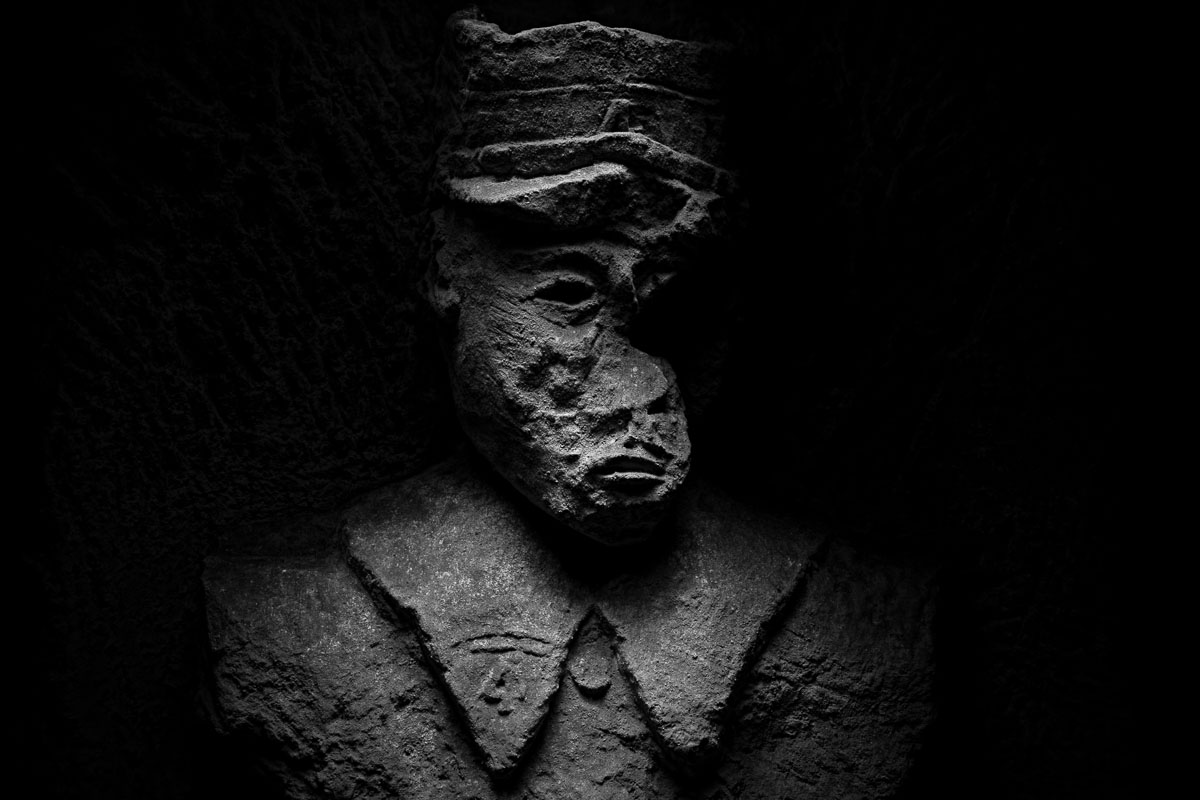
Sculpture of French soldier wearing 1914 uniform, Picardy, France (January 16, 2014) (© Jeff Gusky)
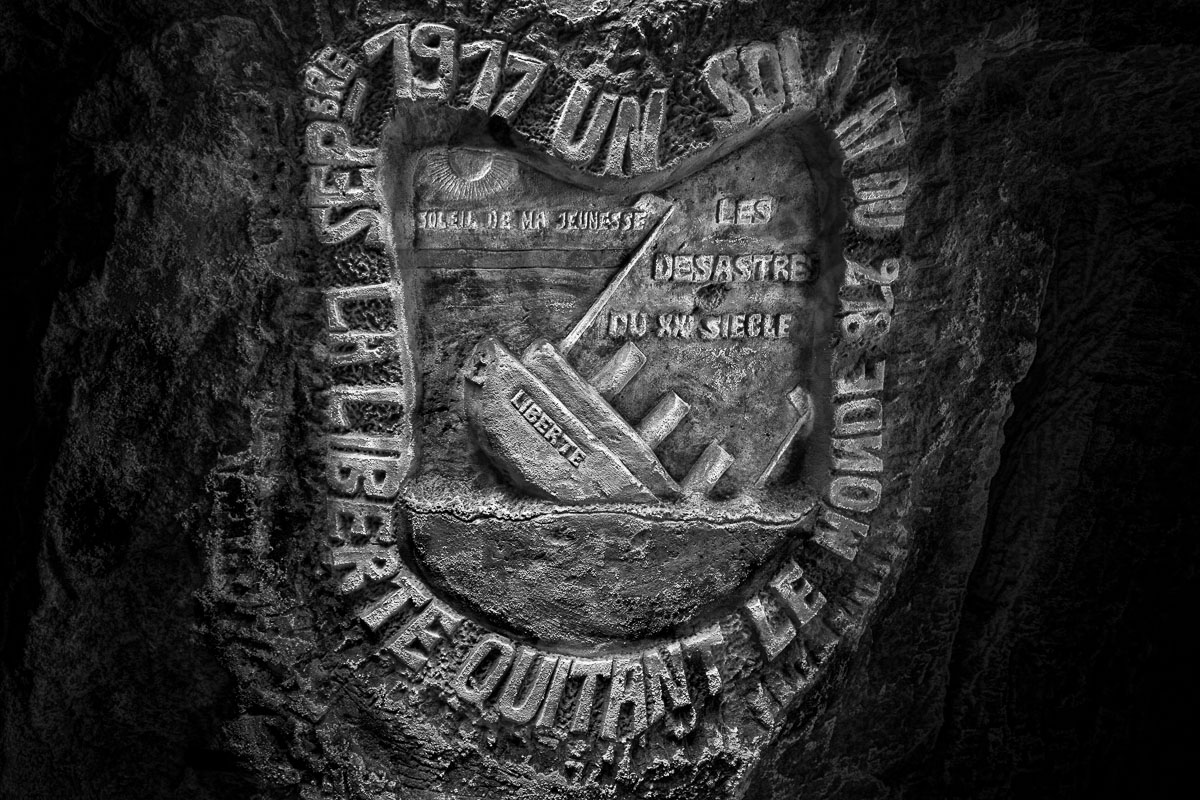
Carving reads: ““Liberty leaving the world, September, 1917, a soldier of the 278, the disasters of the 20th Century, the sun of my youth”,” Picardy, France (January 26, 2014) (© Jeff Gusky)
Faces emerge from the stone, both soldier portraits and caricatures of the enemy, alongside chapels, scrawled baseball game scores, idealized women, skulls, even a horse embedded in the wall that’s 2/3 life size. There are also around 2,000 soldier names, as the Associated Press reported in April, from Americans, British, Australian, French, and German soldiers, and even from as far away as Buenos Aires. Often these underground spaces connected directly to the trenches, and detonations by the enemy in the mines were always a concern, so those names and the long stairways carved to the surface are often the last moments of these people’s lives. To reach this labyrinth requires Gusky to crawl through narrow holes with a load of lights and equipment to properly light them in the dark, something the self-taught photographer continues to perfect.
“There’s a power that breaks through modern numbness and abstraction when you see another human being’s writing, not knowing whether they were going to be alive tomorrow, writing a message to the future,” he said. “They’re not carving about war or glory or killing people, but carving about home and loved ones and faith and laughter, sports, and beauty, the things that reveal their inner life.”
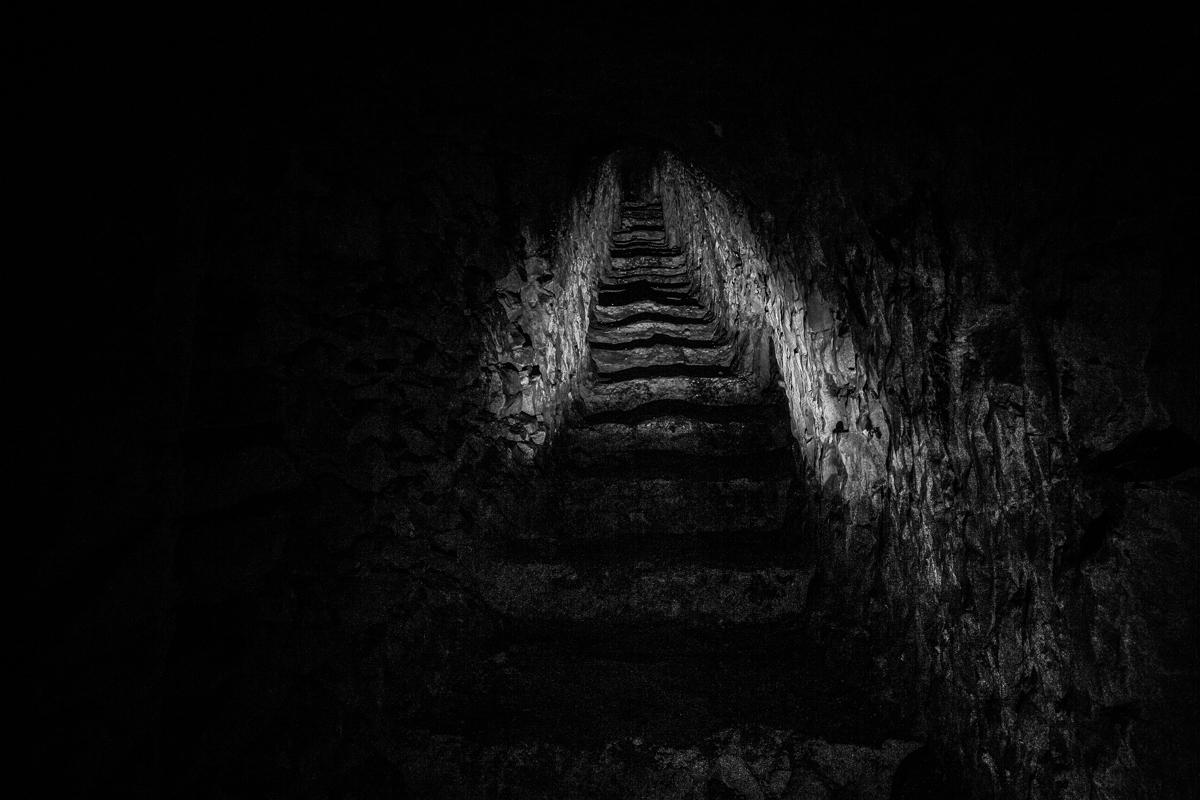
Stairway from an underground city to the trenches, Nord-Pas-de-Calais, France (January 26, 2014) (© Jeff Gusky)

WWI soldiers graffiti, Picardy, France (January 30, 2013) (© Jeff Gusky)
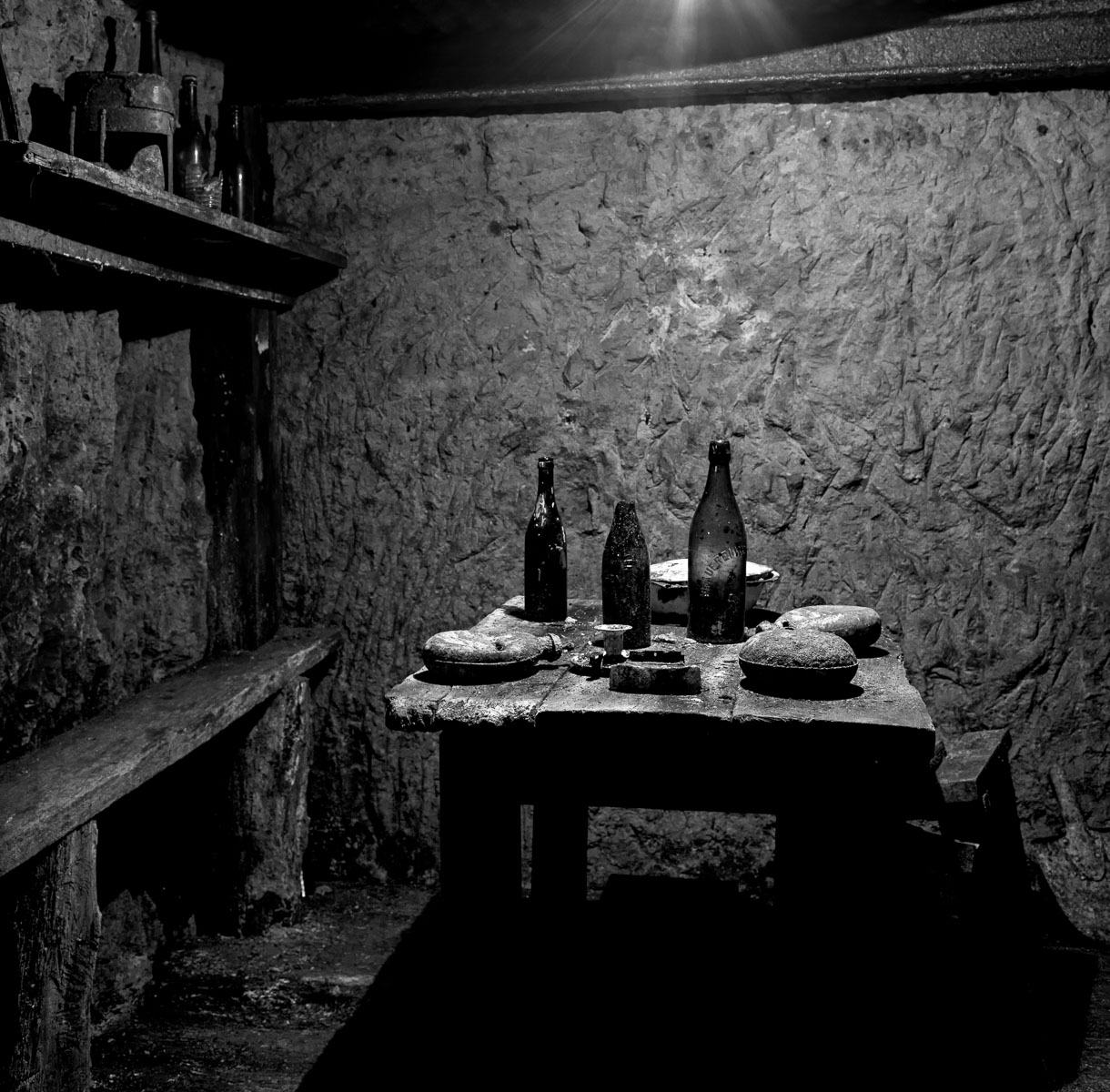
French soldiers’ underground dining area, Vauquois, France (December 6, 2011) (© Jeff Gusky)
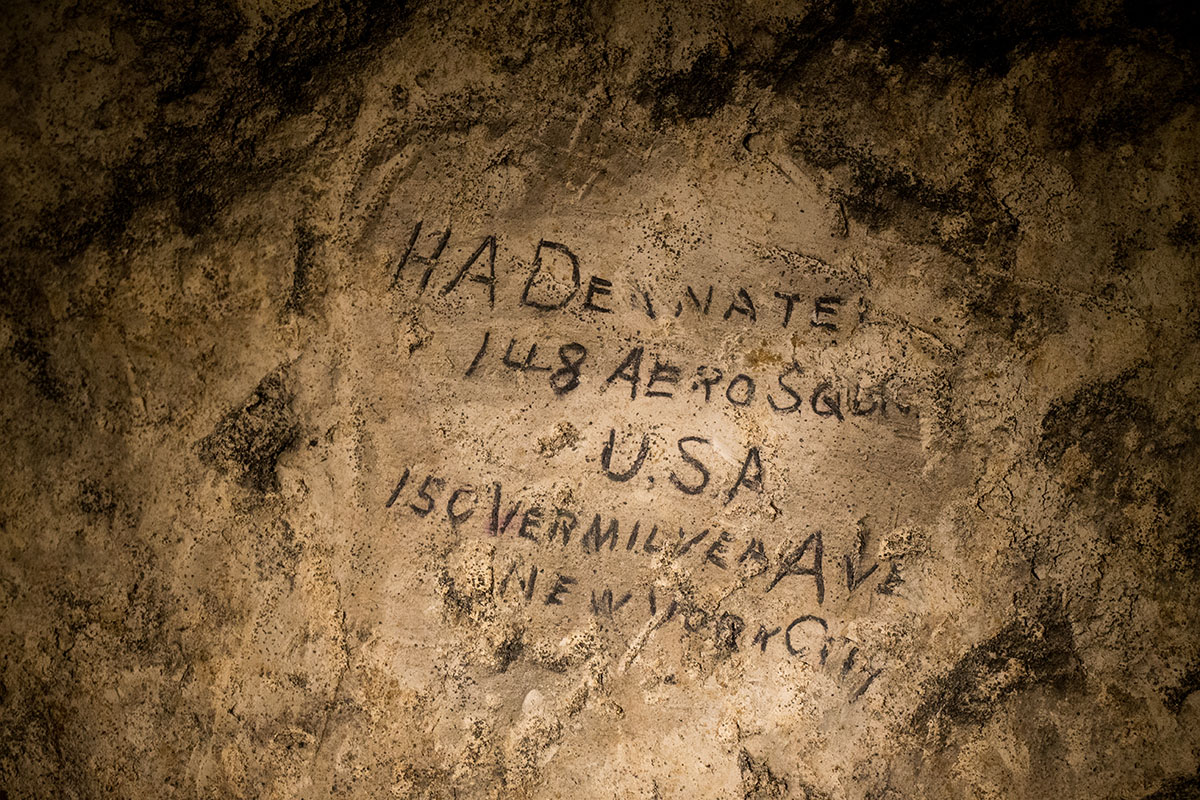
WWI soldier’s inscription in the subterranean city at Naours – –Bocage Hallue (2015) (© Jeff Gusky)
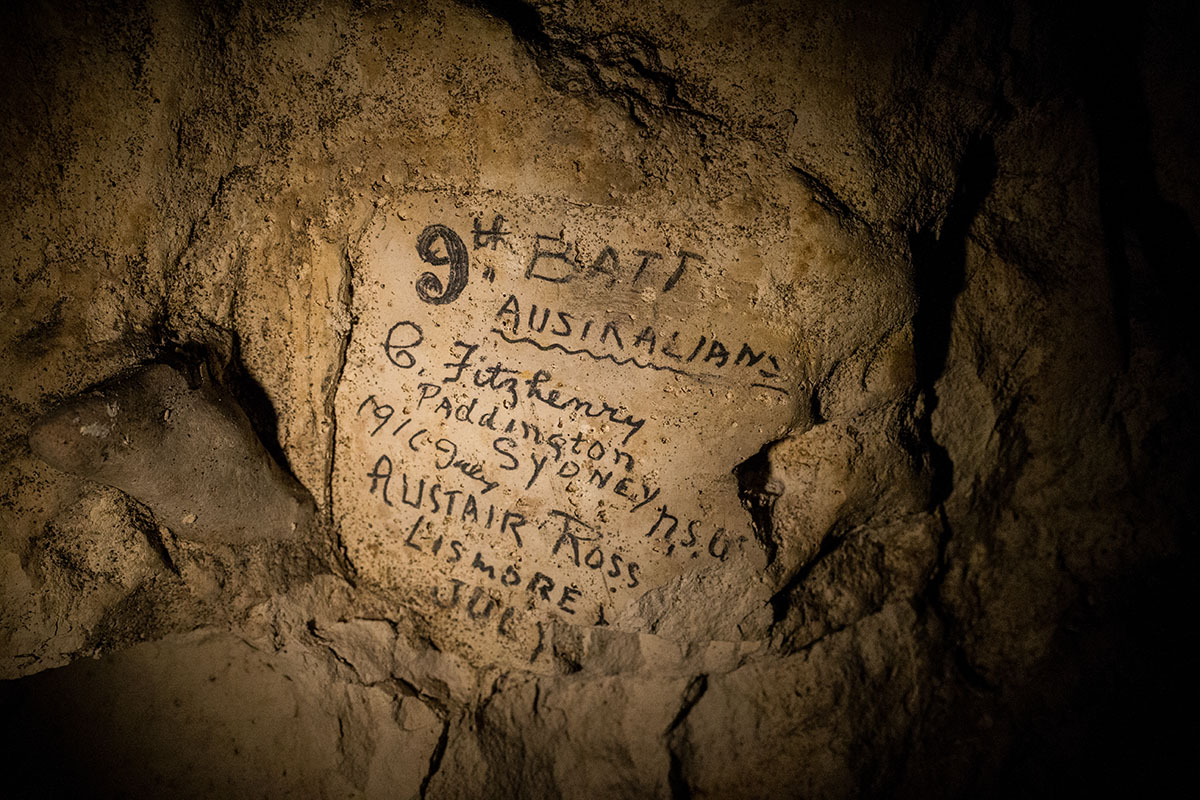
WWI soldier’s inscription in the subterranean city at Naours -– Bocage Hallue (2015) (© Jeff Gusky)
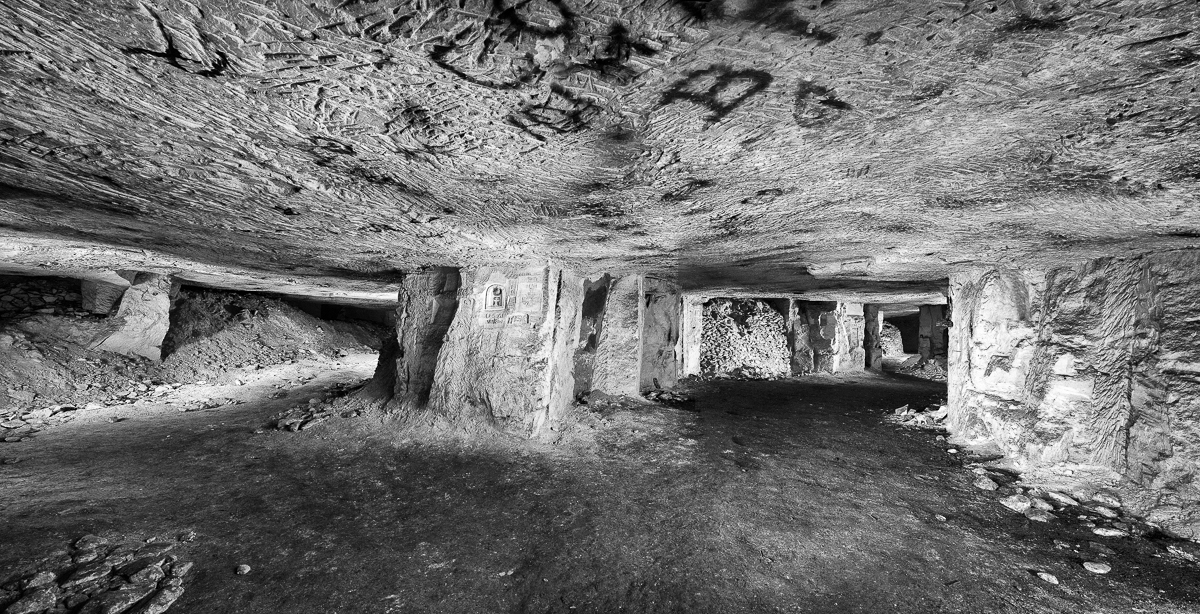
Former underground city beneath the trenches, Picardy, France (March 11, 2013) (© Jeff Gusky)
View more photographs from Jeff Gusky’s Hidden World of WWI on his website.

Δεν υπάρχουν σχόλια:
Δημοσίευση σχολίου